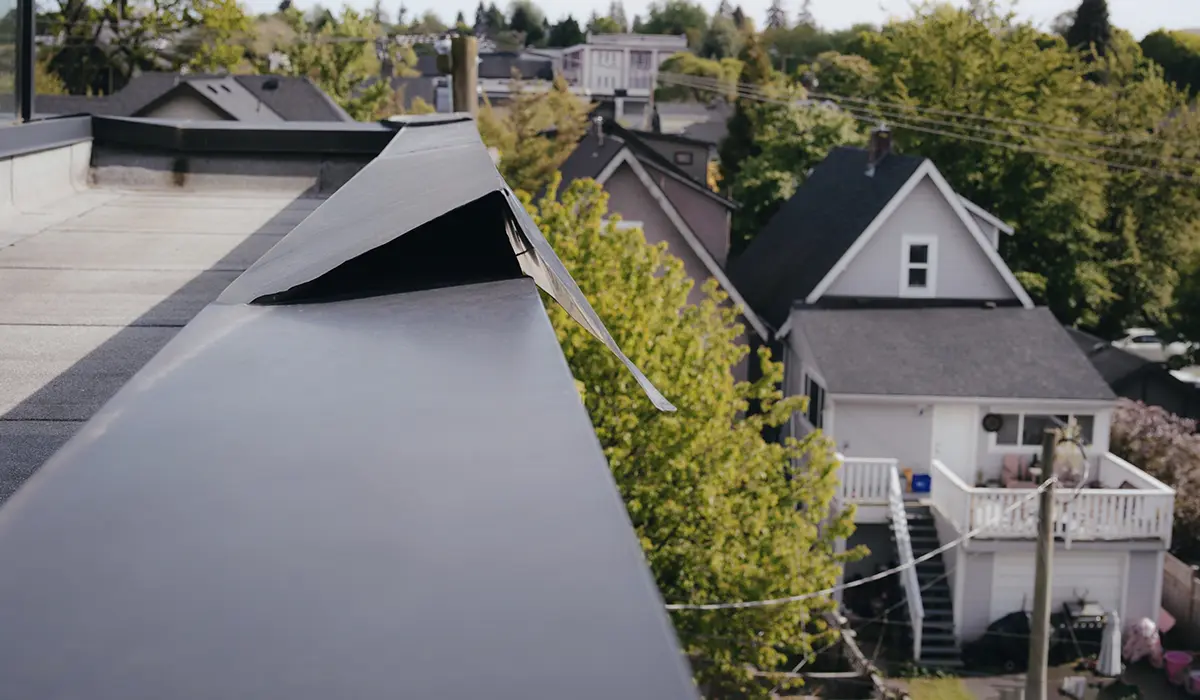What is the Life Expectancy of a Flat Roof?
Flat roofs, with their clean lines and modern aesthetic, are a popular choice for both residential and commercial buildings. However, unlike their pitched counterparts, flat roofs don’t shed water as efficiently. This can lead some homeowners to wonder – just how long will a flat roof last?
The answer, unfortunately, isn’t a simple one. The life expectancy of a flat roof depends on a confluence of factors, from the material used to the climate it endures. Here we will delve into the world of flat roofs, exploring the average lifespan, the key players influencing longevity, and how to maximise the years you get out of your flat roof.
The Average Lifespan: A Range, Not a Fixed Number
Generally speaking, a well-maintained flat roof can last anywhere between 15 and 30 years. However, this range can be stretched or compressed depending on various factors we’ll explore further down.
Here’s a quick breakdown of the average lifespan for some popular flat roof materials:
- EPDM (ethylene propylene diene monomer): 25-30 years.
- TPO (thermoplastic polyolefin): 20-25 years.
- PVC (polyvinyl chloride): 20-25 years.
- Modified Bitumen: 15-20 years.
It’s important to remember that these are just averages. A high-quality EPDM roof in a temperate climate with regular maintenance could easily reach 40 years, while a poorly installed PVC roof in a harsh environment might need replacing in just 10 years.
Factors Affecting Flat Roof Lifespan
Now that we’ve established the average lifespan is a spectrum, let’s delve into the key factors that influence how long your flat roof will hold up:
- Material Selection: As mentioned earlier, the type of material used for the roof membrane plays a significant role. EPDM is known for its excellent durability and resistance to UV rays and extreme temperatures. TPO and PVC offer similar benefits, while modified bitumen roofs, though cost-effective, tend to have a shorter lifespan.
- Installation Quality: A skilled and experienced roofer is crucial for a long-lasting flat roof. Proper installation ensures the membrane is laid flat, seams are securely sealed, and there are no pockets where water can pool. Faulty installation can lead to premature leaks and structural issues.
- Maintenance: Regular maintenance is vital for maximising the lifespan of your flat roof. This includes twice-yearly inspections for signs of wear, tear, or ponding water. Removing debris like leaves and branches, addressing minor repairs promptly, and having the roof professionally cleaned every few years can significantly extend its life.
- Climate: The climate your roof endures plays a big role in its lifespan. Harsh weather conditions like extreme heat, hail, and heavy snowfall can accelerate wear and tear. Roofs in coastal areas are also susceptible to salt damage. Understanding your climate and choosing a material suited to it is crucial.
- Drainage: Flat roofs rely on proper drainage systems to channel water away from the building. Clogged drains or improper slopes can lead to water pooling, which can lead to leaks, mould growth, and structural damage.
- Foot Traffic: While some flat roofs are designed for occasional foot traffic, excessive walking on the roof can damage the membrane. Limit foot traffic to essential maintenance and repairs if possible.

Signs Your Flat Roof Needs Replacement
Even with the best care, all roofs eventually reach the end of their lifespan. Here are some signs that might indicate your flat roof needs replacing:
- Visible cracks, blisters, or tears in the membrane.
- Pooling water on the roof’s surface.
- Interior leaks or water stains on the ceiling.
- Sagging or low spots in the roof.
- Unexplained increase in your energy bills (may indicate insulation issues).
If you notice any of these signs, don’t delay. Contact a reputable roofing contractor for an inspection and discuss your options. Early detection and repair can often save you money in the long run.
Tips for Maximising Your Flat Roof’s Lifespan
By following these simple tips, you can significantly extend the life of your flat roof:
- Schedule regular inspections and maintenance.
- Keep the roof clean and free of debris.
- Address minor repairs promptly before they become major problems.
- Consider applying a protective coating to the roof membrane.
- Trim any overhanging trees that could scrape or damage the roof.
- Be mindful of foot traffic on the roof.
Conclusion
While flat roofs may not have the same lifespan as pitched roofs, with proper selection, installation, and maintenance, they can provide decades of reliable protection for your home or business. By understanding the factors affecting flat roof lifespan and following the recommended maintenance practices, you can get the most out of your investment. Remember, a well-maintained flat roof can be a beautiful and functional addition to your property for many years to come.
Here are some additional points to consider for a well-rounded conclusion:
- Weigh the pros and cons: Flat roofs offer a unique aesthetic and can be ideal for rooftop gardens or solar panel installations. However, they require more maintenance than pitched roofs. Consider your needs and priorities when deciding if a flat roof is the right choice for you.
- Work with a qualified roofer: When selecting a contractor for installation or repairs, choose a company with experience in flat roofing and a proven track record. Don’t be afraid to ask for references and inquire about the materials and warranties offered.
- Plan for the future: While a flat roof can last for decades with proper care, factor in the eventual replacement cost when budgeting for your property.
By taking a proactive approach to maintaining your flat roof, you can ensure it provides a safe and weatherproof barrier for your home or business for many years to come.
For more information on Flat Roofing contact Associates Roofing Partnership.
